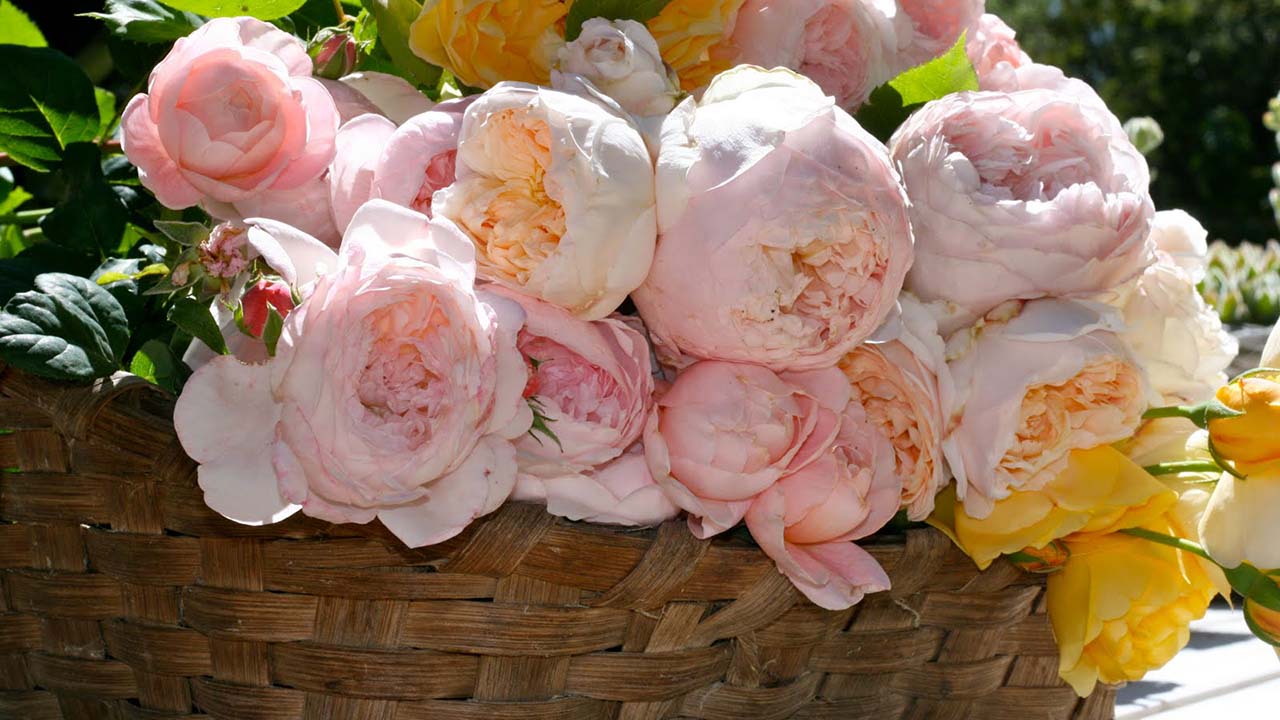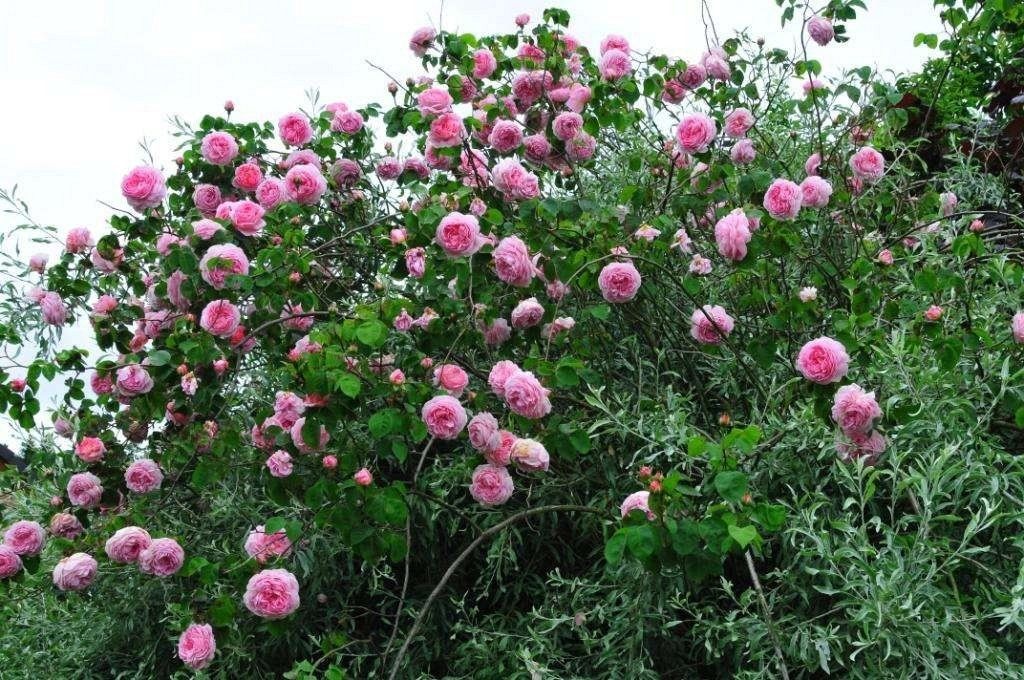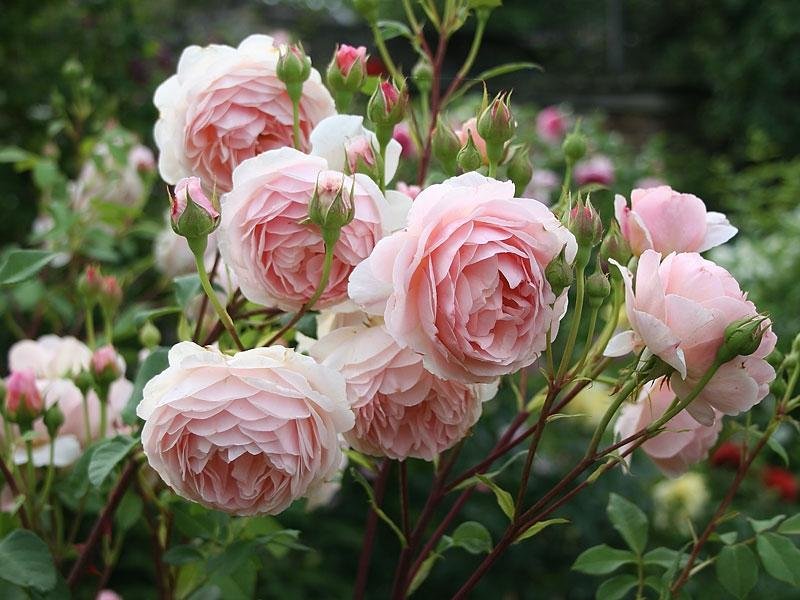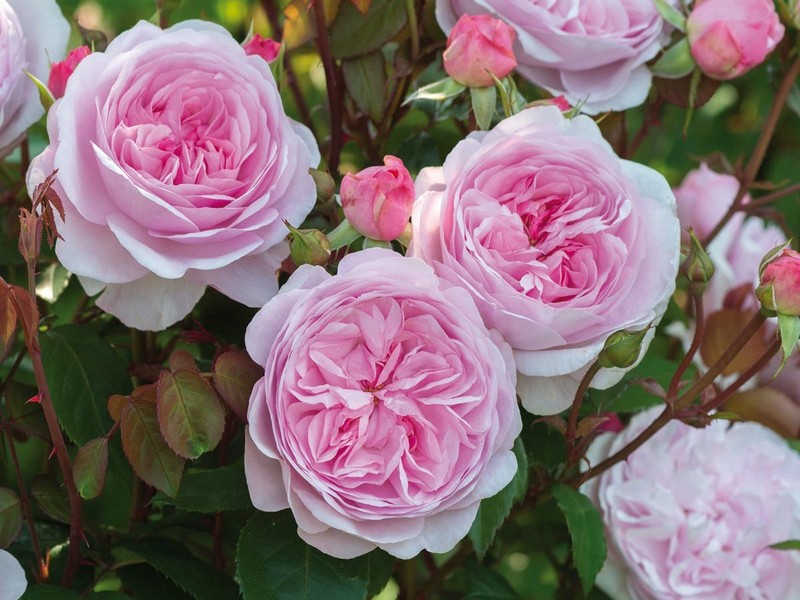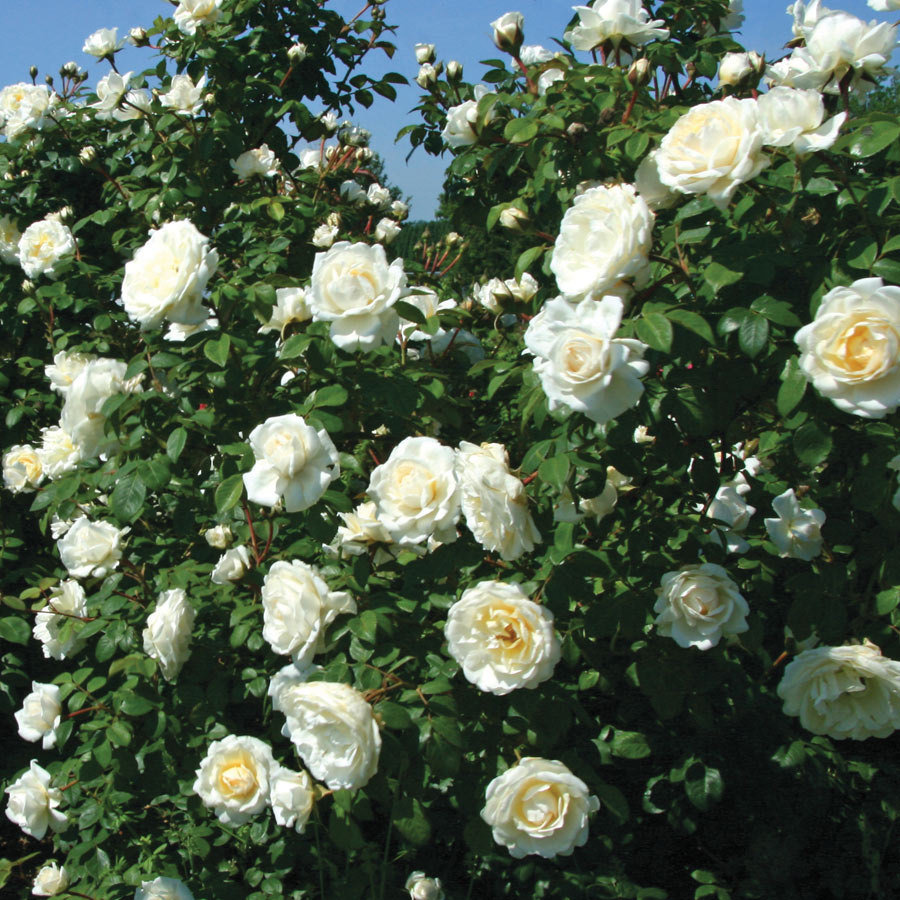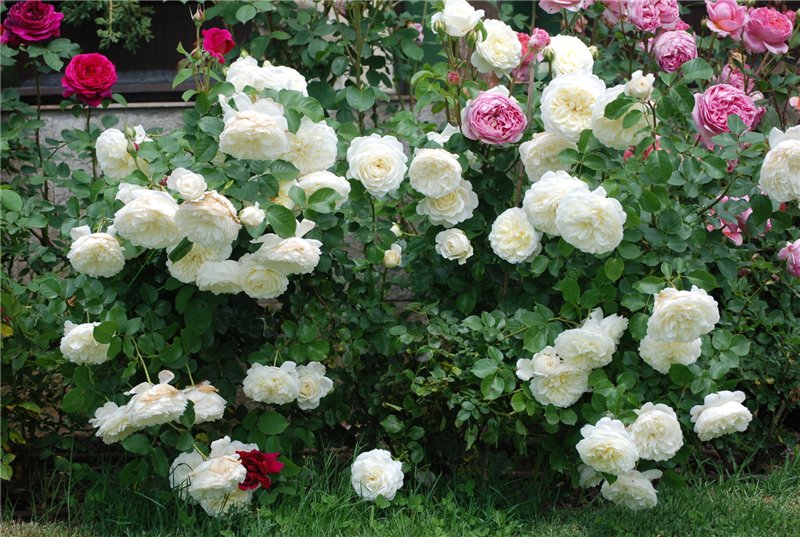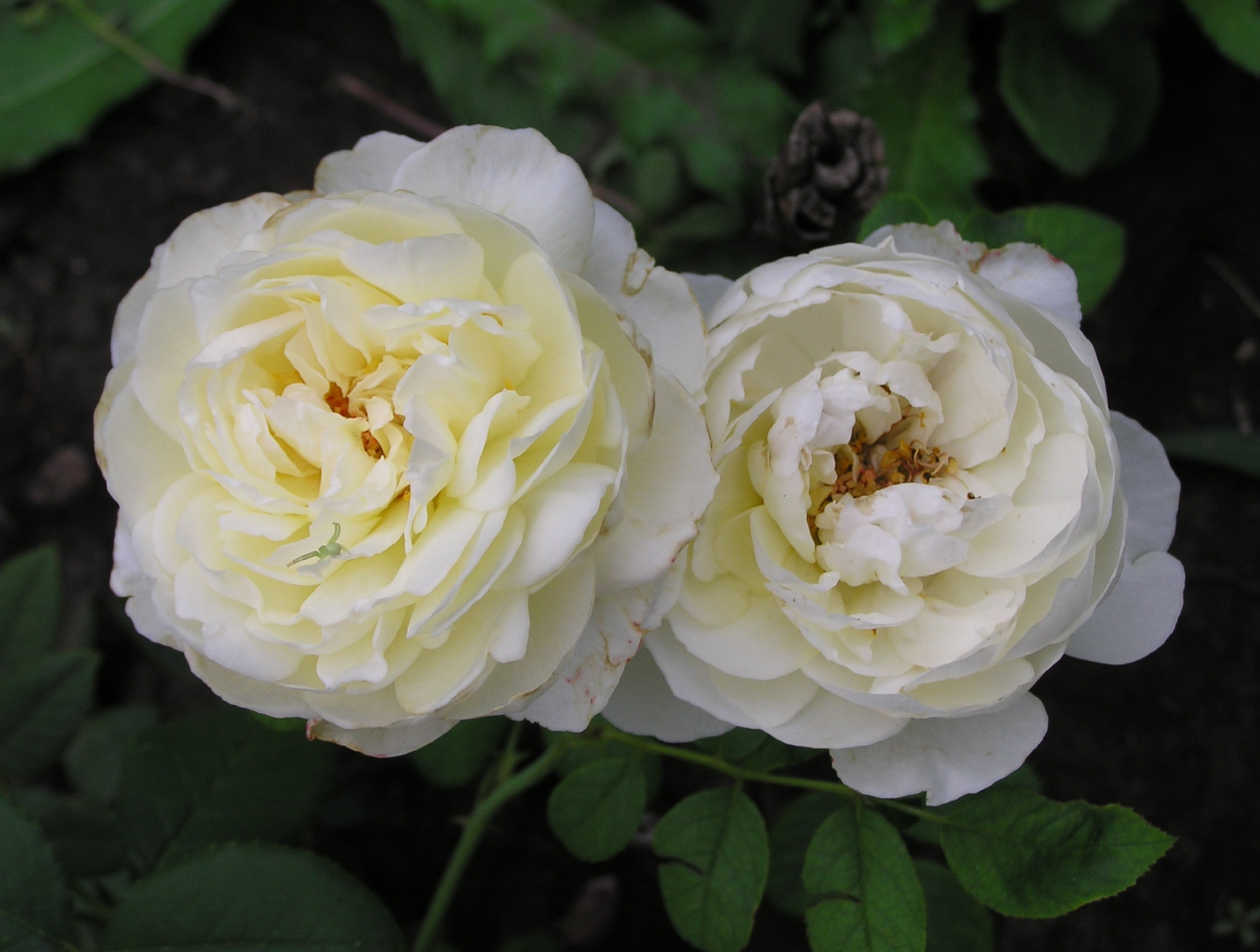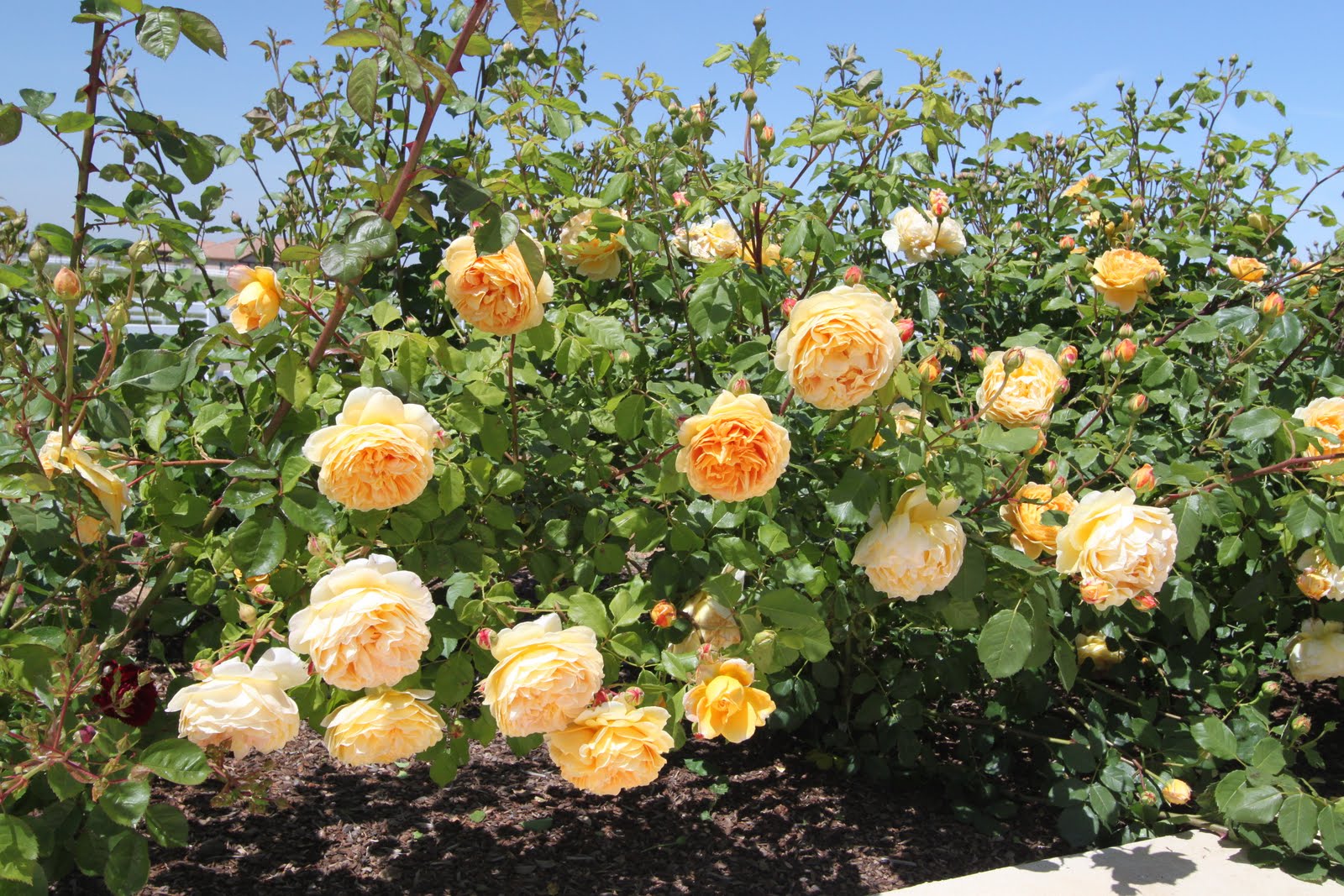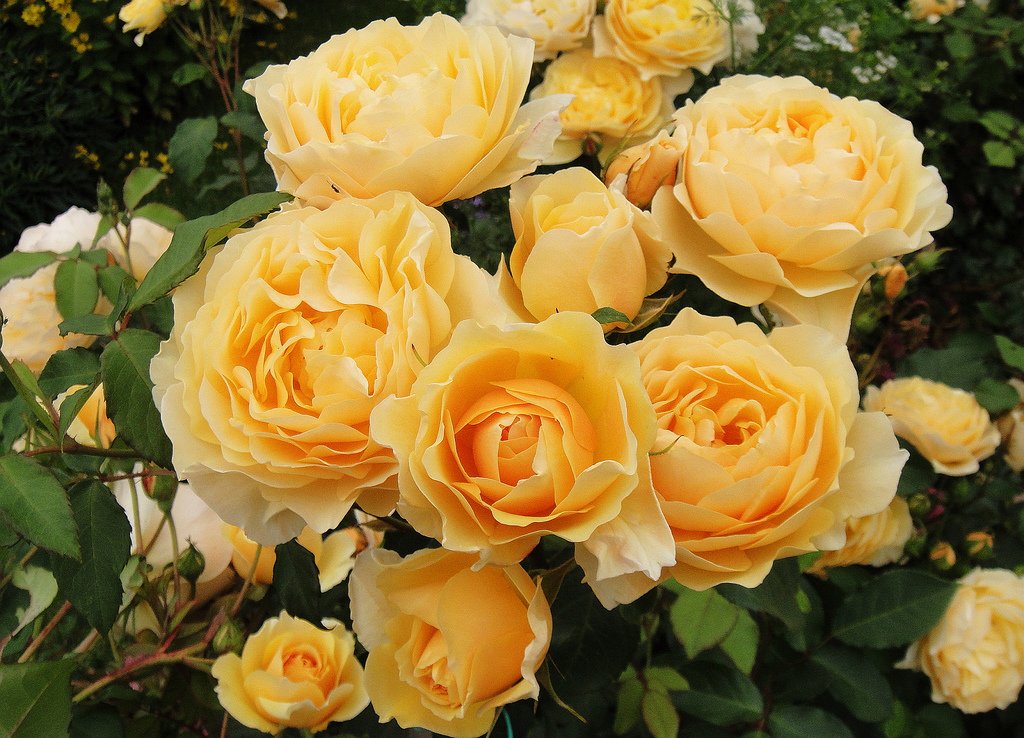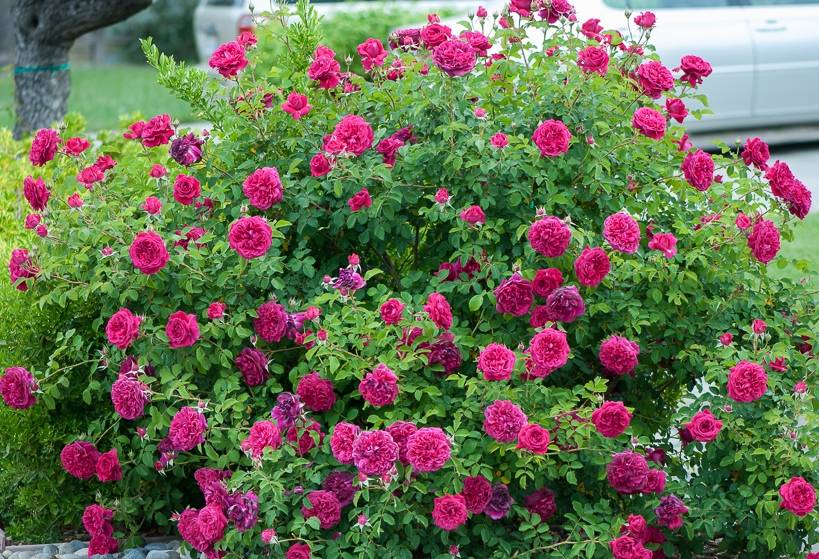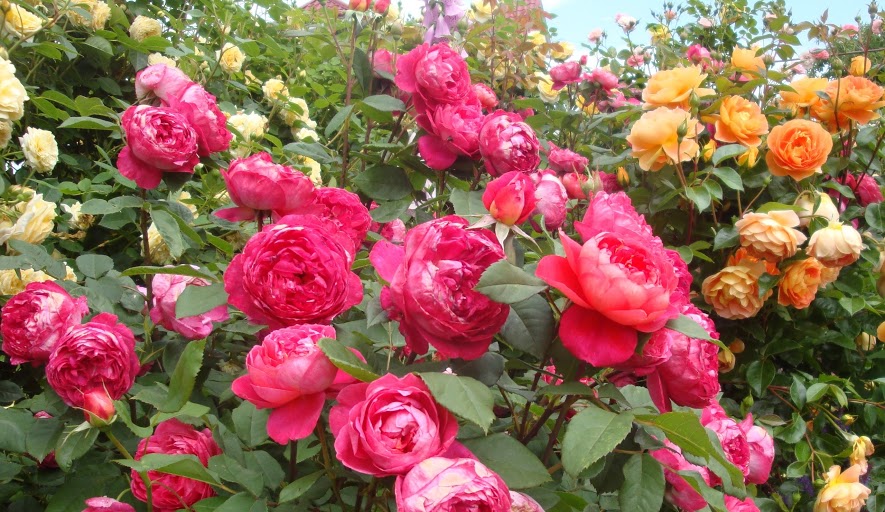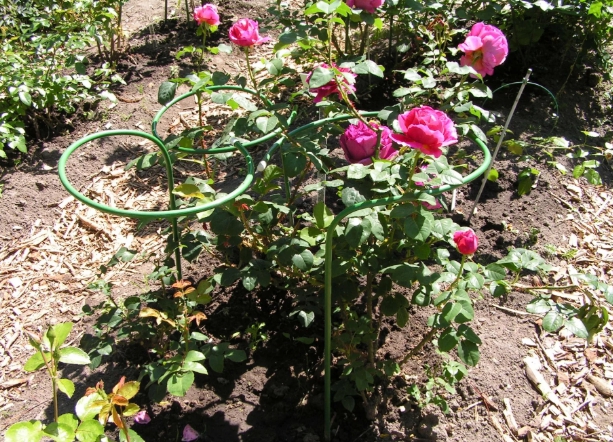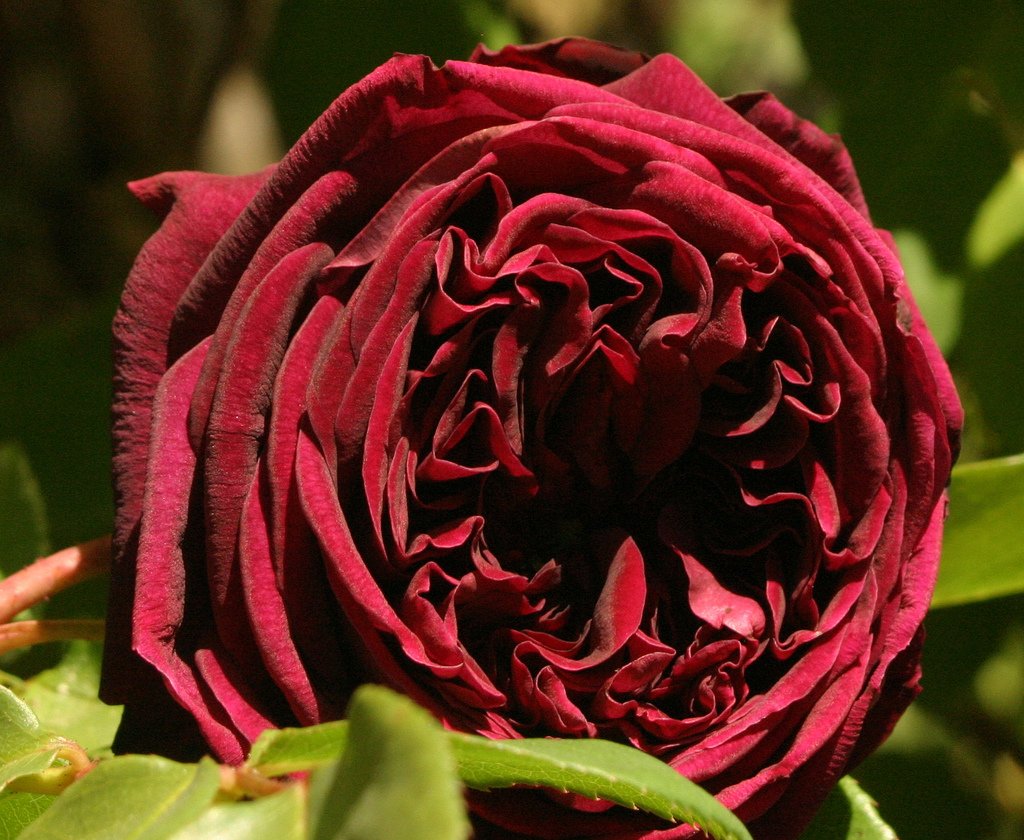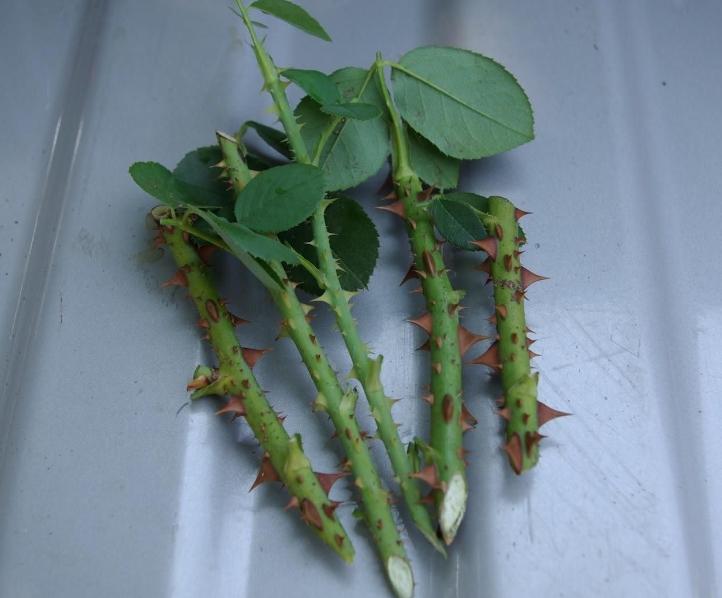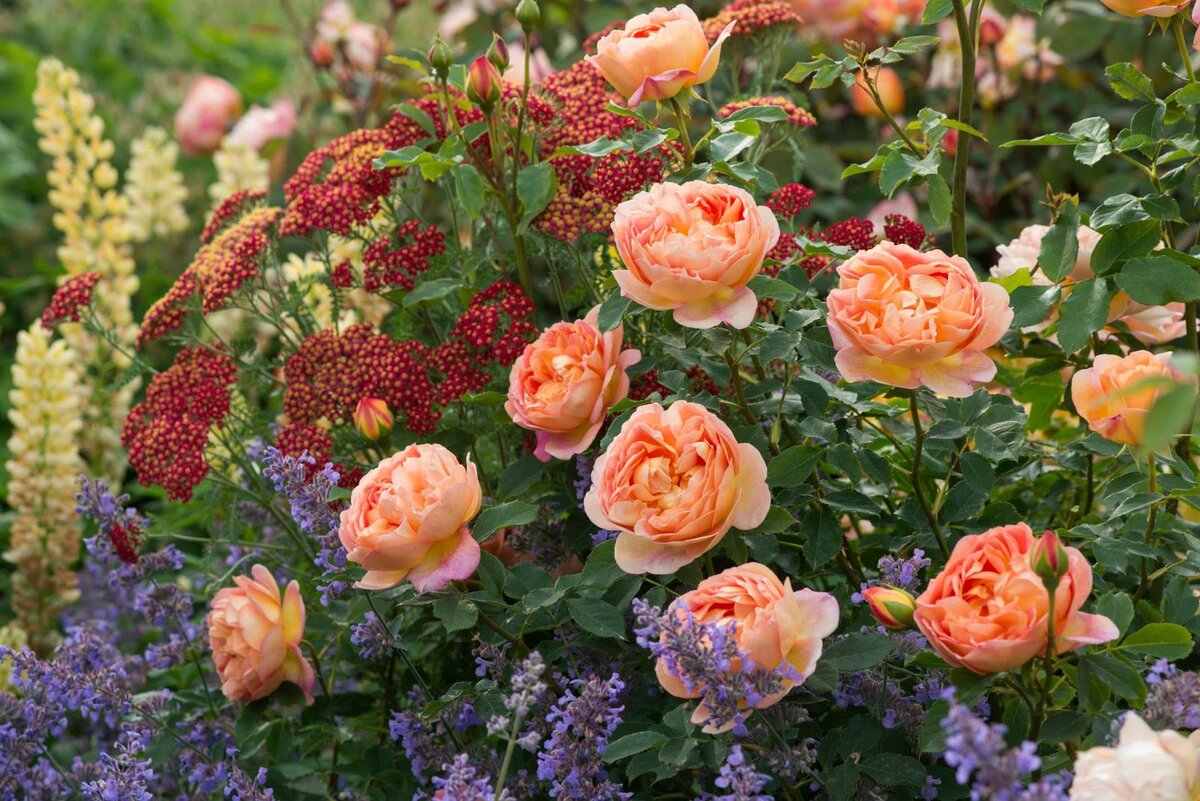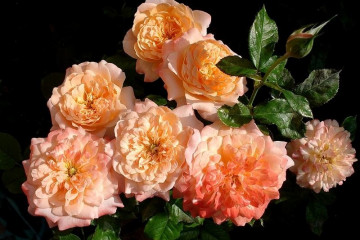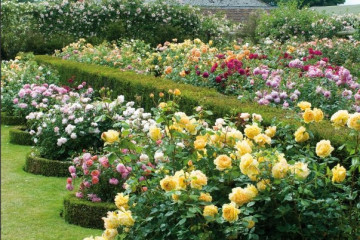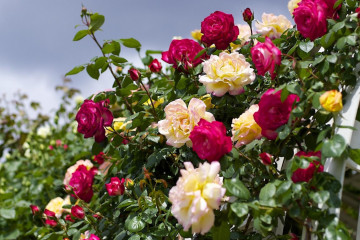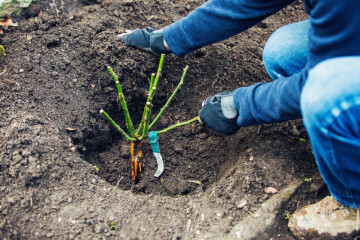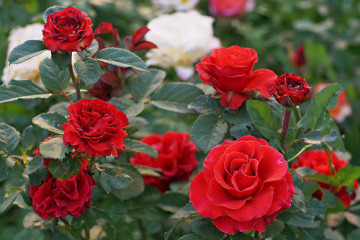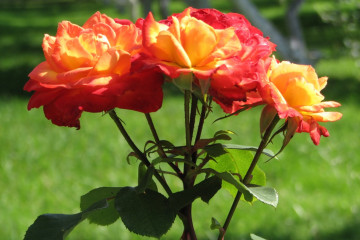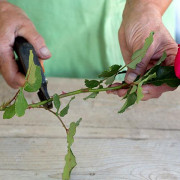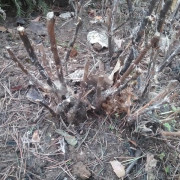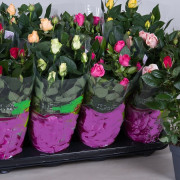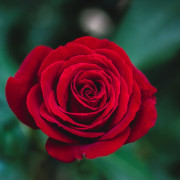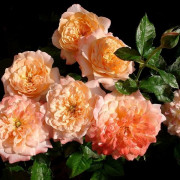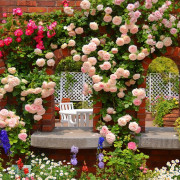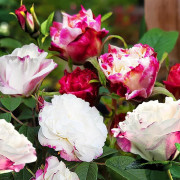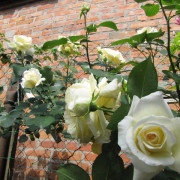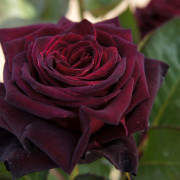Peony roses - what is this variety
Content:
Often novice flower growers want to purchase unusual flowers, similar to peonies, without knowing what they are called. The most popular are peony roses, bred in England at the end of the 20th century. They got their name because of the structure of the flower; multi-petal inflorescences resemble a lush peony. The bred plant combines decorativeness, unpretentiousness, high immunity to diseases and pests. By choosing the variety you like most, you can transform your garden plot in a short time.
Peony roses - what is this variety
Peony or Austin roses belong to the bush and climbing species. Densely leafy plant reaches 1 to 5 meters in height and 0.7-3 meters in width. The flowers are large, up to 15 cm in diameter. During the flowering period, the buds do not fully open; during withering, the central petals remain in a twisted state.
Depending on the variety, the color of the inflorescences can be very different: pink, white, red, yellow, two or three colors. The shape of the flower is spherical, resembles a peony in appearance.
Thin and long shoots are covered with thorns and oblong leaves. The leaf plate is small in size, with jagged edges, painted in a dark emerald color.
Types of peony roses and varieties
Currently, peony roses are not singled out as a separate group. They differ from other types in the following parameters:
- flowers, similar to peonies, have a cup-shaped or rosette shape;
- rich aroma intensifies in cloudy weather;
- fast growth - in a short time the plant forms dense thickets;
- the stock never grows wild.
Also, the species is rarely exposed to diseases and pests. Currently, more than 200 varieties have been registered, which, despite their winter hardiness, require careful shelter. All varieties are well combined with each other and look harmonious on the garden plot.
To choose a quality seedling, it is important to heed the advice of experienced flower growers. The seedling should have dormant buds, no green shoots, with a well-developed root system, soft and elastic. The green bark must be free of signs of disease and mechanical damage, the graft site must be free of breaks.
Pink peony roses
The pink look is characterized by the splendor and tenderness of the flower. Depending on the variety, the flower can be terry, differ in size, density of petals and colors (from pink, cream to peach).
Constance Price
To obtain the variety, scientists crossed the Gali rose with a modern floribunda. The plant turned out to be strong, more than 4 meters high. Since the shoots are highly developed, the rose needs support.
Delicate pink or caramel terry inflorescences are large, up to 13 cm in diameter, exude a pleasant aroma. Thin and long shoots are covered with thorns and large dark green leaves. The culture blooms well and reproduces even in regions with an unfavorable climate.
Eglantine
The shrub peony rose-scrub blooms throughout the warm period, but with improper care and in rainy weather, it often gets sick. Therefore, the variety is suitable for experienced florists. When planted in the open sun, the flowers fade quickly, the petals are repainted from pale pink to off-white.
The variety has a pleasant, delicate aroma, which is intensely manifested in the evening. The shape of the flower is original - it is somewhat similar to porcelain glasses. The rose should overwinter under cover, since slight frosts can destroy the shrub.
Miranda
The variety is young, bred in the UK in 2005. The plant is distinguished by the color of the inflorescences: the outer petals are colored light pink or white, and the central ones are pale pink. Flowers 12 cm in size, without a rich aroma, are formed on a compact bush about 150 cm high, no more than half a meter wide. Single flowers are suitable for cutting and making bouquets.
The variety is resistant to temperature extremes, grows well and blooms in partial shade, is immune to diseases and pests.
White peony roses
There are few white hybrids. Despite this, they are very popular with flower growers, as they not only decorate the backyard, but also exude a pleasant aroma.
Snow Goose
A tall shrub with snow-white or creamy narrow-petal flowers, up to 5 cm in diameter. With timely care, it grows 1.5 m wide and reaches a height of 3 m. The inflorescences are collected in a brush, which contains from 5 to 7 buds. Thornless shoots are covered with small, dark green leaves with serrated edges. Flowering is long and lasting.
Tranquility
The variety belongs to the musky species. Buds with a diameter of 11 cm have a neat rounded shape. The variety has one feature: when closed, the petals are creamy, as they bloom, they become pure white.
The plant forms a semicircular bush up to 0.5 m high. Erect shoots are covered with small matte leaves of a dark green color.
Claire Austin
A stunning variety with cupped buds of snow-white color with a cream shade. The plant forms a medium-sized shrub no more than 1.5 m high.With the onset of warm days, 3 small buds with a diameter of about 10 cm are formed on each erect shoot.
Yellow peony roses
Thanks to the work of English breeders, peony roses with yellow petals were born. Such varieties are loved by Russian flower growers for their unpretentiousness and resistance to sudden changes in temperature.
Golden Celebration
This wonderful variety is distinguished by lush flowering and large inflorescences up to 16 cm in diameter. Flowers are collected in a group of 3-4 pieces. Honey-lemon roses exude a pleasant aroma.
The peony bush rose reaches a height of 1.5 m. The spiked shoots are curved, covered with dark green bark. The variety is resistant to sudden changes in temperature and diseases. Long-lasting flowering throughout the warm period.
Graham Thomas
The variety is young, bred in 1983.Thanks to the fragrant terry flowers, the plant has gained great popularity among flower growers. The inflorescences are large, 10-12 cm in diameter. The petals are canary-colored with a peach tint. The rose bush blooms from the beginning of summer until the first frost. Inflorescences are collected in clusters of 3-5 pcs
In regions with a cold climate, the rose bush reaches 1.5 m, in southern cities the plant grows up to 3 m. The variety is resistant to temperature changes and has a strong immunity to diseases.
Red peony roses
Red roses are a symbol of love and passion. They are used to decorate personal plots, as well as to make bouquets.
William Shakespeare
Densely double and very fragrant flowers, 8 cm in diameter, collected in clusters of 3-5 pieces. The color of the petals depends on the growing conditions and can be scarlet and purple.
The plant forms a powerful bush up to 2 meters high. The variety is resistant to diseases and sudden temperature changes. Abundant flowering, 2 times a season. The first wave occurs in early summer, the plant blooms again in late July.
Benjamin Britten
A popular variety with red, orange-tinted, cupped, double inflorescences. During flowering, buds up to 12 cm in diameter do not fully open. The plant forms a compact shrub up to 1 meter high. On the shoots, flowers are arranged in groups of 3-5 pcs. During flowering, the area is filled with a strong aroma.
The variety is suitable for garden decoration, it is also planted next to other roses of a lighter color. Long bloom, but not abundant.
Othello
The variety looks very effective. In the process of flowering, the petals change color from juicy lemon to rich purple. The plant is small and compact. Dark green shoots are covered with thorns and pistachio leaves.
Flowering is profuse and long lasting. The variety is resistant to cold weather, diseases and pests. Cut flowers are used to make bouquets.
Tradescant
These peony roses are the darkest in color.
At the beginning of flowering, the petals are colored dark red, as the bud opens, it becomes burgundy, almost black. Inflorescences are small, 7 cm in diameter, collected in clusters of 3-5 pieces. Thin, strongly curved shoots 60 cm long are covered with thorns and light green leaves.
How to care for peony roses
Peony roses are unpretentious. But in order for the plant to please with its flowering for a long time, it is necessary to follow the rules of care.
Watering rules and humidity
Watering is carried out with warm, settled water as the top layer of the soil dries out. For one bush plant, at least 5 liters of water are used, a peony climbing rose will need about 15 liters. Irrigation is carried out in the morning or evening hours, trying not to get on the leaves and buds.
Top dressing and soil quality
For abundant long flowering, the plant is fed with nitrogenous and phosphorus-potassium fertilizers. At the end of summer, no top dressing is applied so that the shoots have time to lignify and prepare for hibernation.
Pruning and replanting
To give the bush a decorative look, it must be cut off. Do this before bud break, immediately after removing the shelter. The plant is carefully examined, get rid of dry, not overwintered shoots. Healthy branches are pruned 1/3 of the length to healthy tissue. Curb varieties are cut to a height of no more than half a meter.
The transplant is carried out every 5 years. To do this, the plant is carefully removed from the ground and transplanted to a new prepared place. The width of the hole for planting should be at least one meter, and the depth - 50 cm. The bottom is covered with rotted compost and drainage.
Breeding peony roses
Peony roses are propagated by cuttings, branches. You can also propagate the plant by seeds, but this is a complicated business and often does not bring the desired result.
Cuttings
Ripe, but not yet lignified cuttings are cut in August. Before planting, the lower leaves are removed, and the cut is made oblique. The shank is buried at an angle into the ground and covered with a glass cover for rapid root formation.
Throughout the winter, it is necessary to monitor the moisture content of the soil and regularly ventilate the cuttings to avoid rotting. With the arrival of spring, the plant will start growing and begin to intensively increase the green mass. After a year, rooted roses can be planted in the garden.
Reproduction by branches
Reproduction is carried out in the second half of the summer. To do this, a long, healthy shoot is laid in a prepared trench, leaving the top above the ground, sprinkled with earth and spilled abundantly. In the spring, after rooting, the branch is separated from the mother bush and transplanted to a prepared place.
How to use in landscaping
Peony roses are great for decorating home gardens. They are planted in single groups or in combination with perennial plants with simultaneous flowering. Tall and park varieties are suitable for hedging and vertical landscaping. Medium-sized ones look beautiful next to phlox, aconite, sage. The foreground of the flower garden is decorated with border varieties.
A peony rose is a good find for flower growers, since it is unpretentious, blooms for a long time and abundantly, and is immune to diseases and pests. But before buying a seedling, it is important to find out which variety will be adapted to the climatic conditions, since not all plants can withstand cold winters.
